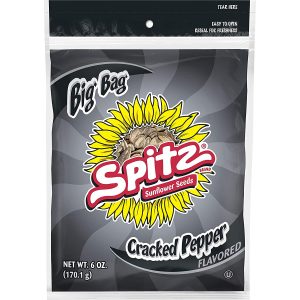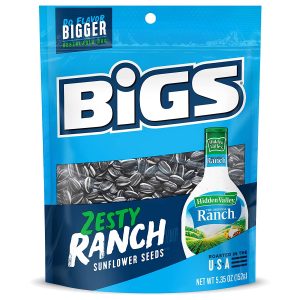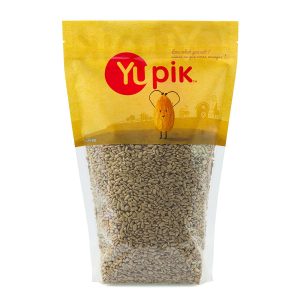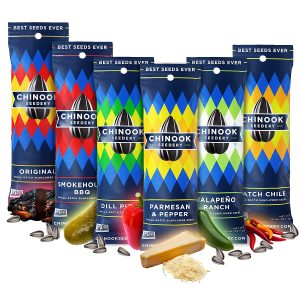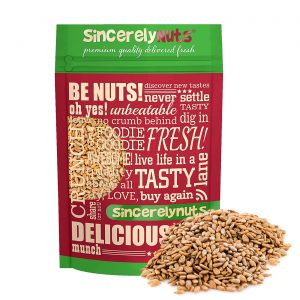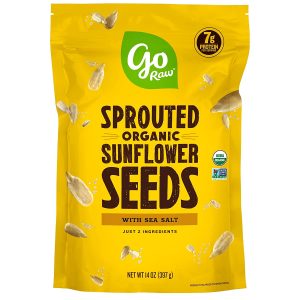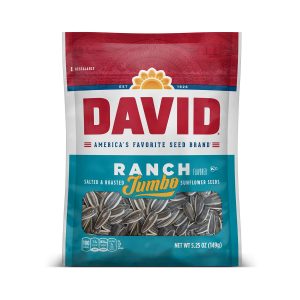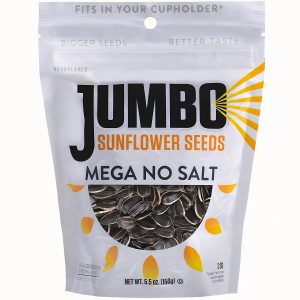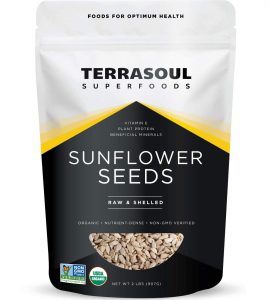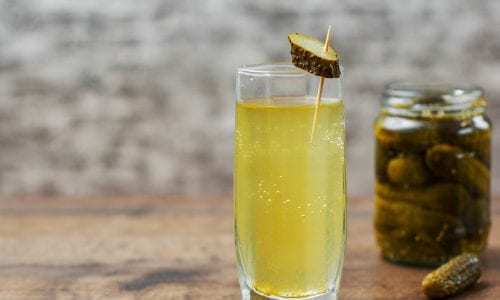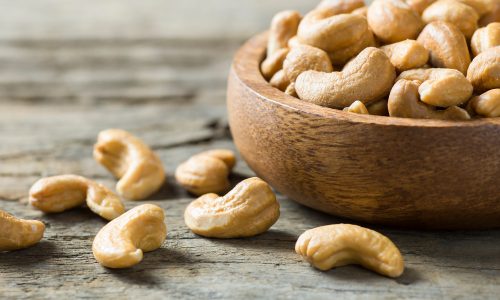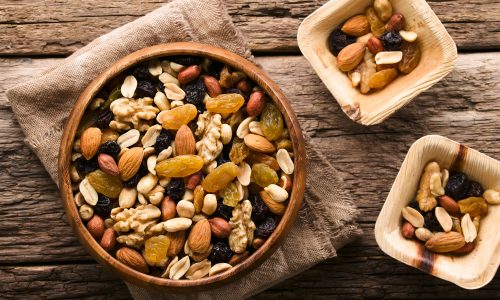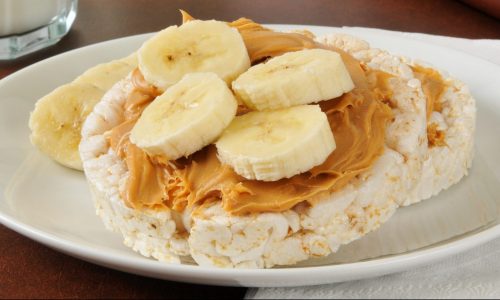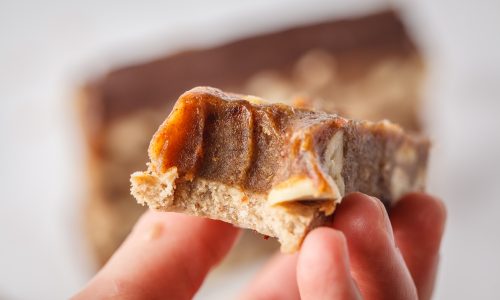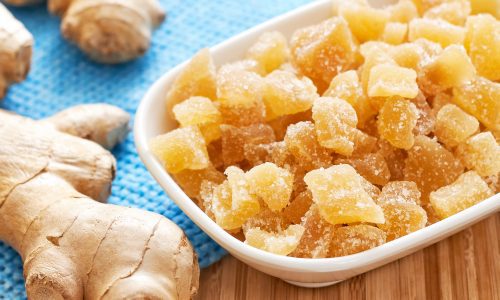The Best Sunflower Seeds
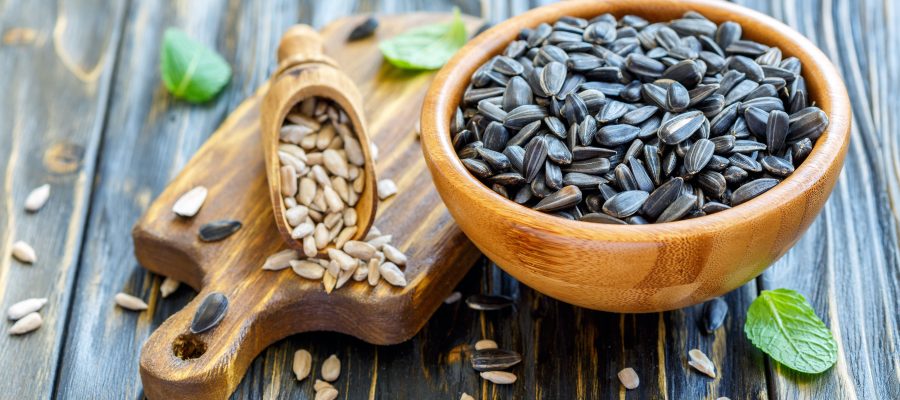
Our Review Process
Don't Waste Your Money is focused on helping you make the best purchasing decision. Our team of experts spends hundreds of hours analyzing, testing, and researching products so you don't have to. Learn more.
Our Picks For The Top Sunflower Seeds
- 1. Spitz Cracked Pepper Flavor Sunflower Seeds, 9-Pack
- 2. BIGS Zesty Hidden Valley Ranch Sunflower Seeds, 12-Pack
- 3. Yupik Shelled Raw Sunflower Seeds
- 4. Chinook Seedery Assorted Flavors Sunflower Seeds, 6-Pack
- 5. Sincerely Nuts Roasted & Salted Sunflower Seeds
- 6. go Raw Sprouted Organic Sunflower Seeds
- 7. DAVID Ranch Flavor Jumbo Sunflower Seeds, 12-Pack
- 8. JUMBO SUNFLOWER SEEDS Roasted No Salt Added Sunflower Seeds
- 9. Terrasoul Superfoods Raw & Shelled Organic Sunflower Seeds
Cracked pepper gives these sunflower seeds a unique taste while also packing in plenty of health benefits. You'll get 9 6-oz. bags of sunflower seeds, sorted twice to ensure you get the largest. The seeds are fire roasted in small batches to create consistent flavor with each serving.
Attention to DetailTwice-sorted seeds ensure you get a hefty kernel-to-shell ratio in every bag.
Stock up on sunflower seeds with this option, which features 12 5.35-oz bags. You can choose from a range of unique flavors, including zesty Ranch, sea salt and black pepper, taco supreme and dill pickle. No artificial flavors or preservatives are added to these treats to keep it as healthy as possible.
Unique Flavor OptionsChoose from flavors like zesty ranch and cheeseburger with these sunflower seeds.
If you're looking for raw, shelled seeds, this option is worth considering. You'll get 2.2 pounds of seeds with no added oil, salt, fat or sugar. You can eat them alone or mixed in with snacks like yogurt.
Versatile UsesUse these seeds for roasting, mix them with yogurt and other snacks or simply eat them raw.
This set comes with six small packages of sunflower seeds, each in a different gourmet flavor. The flavors include original, smokehouse barbecue, dill pickle, parmesan and pepper, jalapeno ranch and Hatch chile. Each package is only 1.5 ounces for a great snack, whether you're at home or on the go.
Broaden Your PalateTry a flavor variety with this option, which includes six different flavors.
Buying Guide
They’re small, crunchy and packed with flavor. But sunflower seeds have become popular in recent years due in large part to their nutritional benefits. In fact, the ingredients in sunflower seeds make them great if you’re trying to keep your cholesterol in check, or if you’re simply looking to add some antioxidants to your diet.
When you think of sunflower seeds, your mind might immediately go to the rich, peanut-like taste. But the seasoning on the shell itself can give sunflower seeds a burst of flavor. You’ll find sunflower seeds seasoned with spicy flavors like jalapeño and cracked pepper or sweet flavors like berry cheesecake and cinnamon churro. There’s even a version of sunflower seeds designed to taste like dill pickles.
You don’t have to rely on packaged sunflower seeds to get your favorite flavor, though. You can buy raw sunflower seeds and roast them on the stove or in the oven. By roasting, you’ll bring out the natural flavor, but you can also add your own seasoning to customize the taste. If you go this route, make sure you buy them already shelled. Chances are, you won’t want to do the tedious work of removing every shell.
But although shelled sunflowers are easier, some enjoy the process of removing the kernel from its shell. To crack the shell, you’ll simply need to place the entire seed between two teeth and squeeze until the shell pops. You’ll then get rid of the shell and enjoy the seed. Some like to chew on the seed, but it’s not safe to swallow it. Called the “hull,” the outer part of a sunflower seed is made from lignin and cellulose, and those two ingredients aren’t digestible.
If you want to incorporate sunflower seeds into your diet, here are some ways to do it:
- Sprinkle it on oatmeal or parfaits
- Use it to make granola
- Add it to stir-fry
- Add it to your salads
- Mix it into baked goods
- Sprinkle it on top of breads and muffins
What to Look For
- To extend the life of your sunflower seeds, leave them unopened or store them in an airtight container. Keep them in a cool, dark place until you’re ready to eat them. Sunflower seeds can last at least a couple of months in the pantry and up to a year in the fridge.
- Sunflowers are low in carbohydrates but high in fat and fiber. This makes them a great addition to the keto diet. You’ll need to enjoy them in moderation, though, since there are some carbs in each serving.
- Some allergy sufferers report reactions after coming into contact with sunflower seeds. In some cases, those who are allergic to sunflower seeds might be able to get similar benefits from sunflower oil.
- Sunflower seeds come in a variety of packaging sizes. You might find a set of multiple smaller packets that you can grab to take on the go with you. If you opt for a larger size, look for one you can securely reseal between uses.
- If chemicals are a concern, you can find sunflower seeds with no preservatives or artificial flavors. You can also find sunflower seeds that eliminate added oil, salt and sugar.
- Salmonella is a risk with sunflower seeds. The roasting process can help reduce that risk, whether you do it yourself or purchase packaged roasted sunflower seeds. As with all foods, you should watch for any recalls and pay close attention to expiration dates.
- As fun as removing the shell on sunflower seeds can be, it can also become an etiquette issue. If you’re in public, spitting out shells could attract negative attention.
More to Explore
To trace the origin of sunflowers, you don’t even have to leave the U.S. Evidence points to American Indian tribes growing the plant about 3,000 years ago. The tribes cultivated the crop in the areas now known as Arizona and New Mexico. As is the case today, the seeds were used to flavor foods, as well as being enjoyed as a snack.
Around the year 1500, explorers transported sunflowers to other regions of the world, leading to its use in medicines and as ornamentation throughout Europe. The process of squeezing oil from the seeds of sunflowers was patented in Europe in 1716. In the 1800s, Russia began growing sunflowers, and it was their seeds that made it back to the U.S., where it was sold as Mammoth Russian sunflower seed.

